How Do Lens Materials Such as Dielectric, Metal, and Metamaterial Impact the Performance of Horn Lens Antennas?
The performance of horn lens antennas is fundamentally determined by the choice of lens materials, with dielectric, metal, and metamaterial options each offering distinct advantages and trade-offs. Understanding these material impacts is crucial for optimizing antenna performance in applications ranging from satellite communications to defense systems. This comprehensive analysis explores how different lens materials affect key performance parameters including gain, bandwidth, polarization purity, and overall efficiency. The selection of appropriate lens materials directly influences the horn lens antenna's ability to achieve desired radiation patterns, minimize side lobe levels, and maintain consistent performance across specified frequency ranges.
Dielectric Materials and Their Impact on Horn Lens Antenna Performance
Permittivity Effects on Beam Focusing and Gain Enhancement
Dielectric materials with varying permittivity values significantly influence the beam focusing capabilities of horn lens antennas. High-permittivity materials such as ceramics and specialized polymers provide superior beam convergence, allowing the horn lens antenna to achieve higher directivity and improved gain characteristics. The relationship between dielectric constant and focal length determines the antenna's ability to transform the diverging electromagnetic waves from the horn into a collimated beam. Advanced Microwave Technologies Co., Ltd. leverages precision-engineered dielectric lenses in their Pyramid Horn Lens Antennas, achieving gains up to 25 dB while maintaining excellent side lobe suppression. The careful selection of dielectric materials enables these antennas to operate effectively across broad frequency ranges, from 11.9-18.0 GHz in the HD-140LHA20A model to 21.7-33.0 GHz in the HD-260LHA25A variant. The dielectric lens design minimizes signal distortion and ensures stable transmission characteristics, making it ideal for demanding satellite communication applications where signal integrity is paramount.
Frequency Response and Bandwidth Considerations
The frequency-dependent behavior of dielectric materials plays a crucial role in determining the operational bandwidth of horn lens antennas. Low-loss dielectric materials with stable permittivity across wide frequency ranges enable broadband operation while maintaining consistent performance characteristics. The selection of appropriate dielectric materials allows horn lens antenna systems to achieve wide frequency coverage, making them highly versatile for various applications in telecommunications, radar, and aerospace systems. Advanced manufacturing techniques ensure that dielectric losses are minimized, resulting in efficient energy transfer and maximum performance in energy-critical systems. The horn lens antenna configuration with optimized dielectric materials provides excellent polarization purity, supporting complex systems with specific polarization requirements. Temperature stability of dielectric materials is equally important, as environmental variations can affect the antenna's performance. Quality dielectric materials maintain their electrical properties across temperature fluctuations, ensuring reliable operation in harsh outdoor and industrial environments where consistent performance is essential for mission-critical applications.
Loss Tangent and Efficiency Optimization
The loss tangent of dielectric materials directly impacts the overall efficiency and performance of horn lens antennas. Low-loss dielectric materials with minimal loss tangent values ensure maximum power transfer from the horn to the lens and subsequently to the radiated electromagnetic field. This optimization is particularly critical in applications requiring high efficiency and minimal power consumption. The horn lens antenna design incorporating low-loss dielectric materials achieves superior transmission characteristics while maintaining excellent gain performance. Material selection also influences the antenna's ability to handle high power levels without degradation, making it suitable for high-power radar and communication systems. Advanced Microwave Technologies Co., Ltd. employs rigorous material testing and characterization processes to ensure that their horn lens antenna products meet stringent efficiency requirements. The combination of optimized dielectric materials and precision engineering results in antennas that deliver exceptional performance while maintaining cost-effectiveness. These materials also contribute to the antenna's durability and longevity, reducing maintenance requirements and ensuring reliable long-term operation in demanding environments.
Metallic Lens Structures and Performance Enhancement
Electromagnetic Wave Manipulation Through Metal Geometries
Metallic lens structures offer unique advantages in horn lens antenna design through their ability to precisely control electromagnetic wave propagation patterns. Metal lenses, particularly those featuring carefully designed geometries such as zone plates or stepped structures, provide excellent phase correction capabilities for horn lens antenna systems. These metallic structures can be engineered to achieve specific focal properties while maintaining excellent mechanical stability and environmental resistance. The use of metallic lenses enables horn lens antenna designs to achieve superior beam shaping and directivity control compared to conventional approaches. Advanced manufacturing techniques allow for precise fabrication of metallic lens structures with complex geometries, enabling optimization for specific frequency bands and performance requirements. The robust construction of metallic lenses ensures reliable performance in harsh environmental conditions, making them ideal for aerospace and defense applications where durability is paramount. Horn lens antenna systems utilizing metallic lenses demonstrate excellent temperature stability and resistance to environmental factors, ensuring consistent performance across varying operational conditions. The integration of metallic lens elements with horn structures results in compact antenna designs with enhanced performance characteristics.
Polarization Control and Cross-Polarization Suppression
Metallic lens structures provide exceptional control over polarization characteristics in horn lens antenna applications. The geometry and orientation of metallic elements can be optimized to maintain high polarization purity while suppressing unwanted cross-polarization components. This capability is particularly valuable in satellite communication systems where polarization discrimination is critical for frequency reuse and interference mitigation. Horn lens antenna designs incorporating metallic polarization control elements achieve superior isolation between orthogonal polarization modes, enabling efficient utilization of available spectrum resources. The metallic structures can be designed to operate across multiple frequency bands while maintaining consistent polarization performance, making them highly versatile for diverse applications. Advanced Microwave Technologies Co., Ltd. implements sophisticated metallic lens designs in their horn lens antenna products to ensure optimal polarization performance across the specified frequency ranges. The precision engineering of metallic elements contributes to the antenna's ability to maintain low side lobe levels while preserving main beam characteristics. These design considerations result in horn lens antenna systems that deliver reliable performance in challenging electromagnetic environments where polarization purity is essential for successful operation.
Bandwidth and Frequency Response Characteristics
The frequency response of metallic lens structures in horn lens antenna applications can be optimized through careful design of element dimensions and spacing. While metallic structures may exhibit more frequency-sensitive behavior compared to dielectric materials, proper design techniques can achieve excellent broadband performance. The use of multi-layer metallic structures or graduated element sizing enables horn lens antenna systems to maintain consistent performance across wide frequency ranges. Advanced design methodologies incorporate electromagnetic simulation and optimization techniques to achieve desired frequency response characteristics while maintaining mechanical simplicity. Horn lens antenna configurations with optimized metallic lenses demonstrate excellent gain stability and beam characteristics across the operational bandwidth. The ability to tailor metallic lens properties through geometric design provides flexibility in meeting specific application requirements. Temperature effects on metallic structures are generally well-understood and predictable, enabling reliable performance estimation across varying environmental conditions. The combination of metallic lens elements with precision-engineered horn structures results in antenna systems that offer excellent performance-to-size ratios, making them ideal for space-constrained applications.
Metamaterial Innovation in Advanced Horn Lens Antenna Design
Engineered Electromagnetic Properties and Performance Enhancement
Metamaterial technology represents a revolutionary approach to horn lens antenna design, enabling the creation of artificial materials with precisely engineered electromagnetic properties. These materials can exhibit unique characteristics such as negative refractive indices, enhanced focusing capabilities, and tailored dispersion properties that are not achievable with conventional materials. Horn lens antenna systems incorporating metamaterial elements can achieve unprecedented levels of performance optimization, including enhanced gain, improved beam shaping, and superior frequency response characteristics. The ability to engineer metamaterial properties at the sub-wavelength level provides designers with exceptional flexibility in optimizing antenna performance for specific applications. Advanced Microwave Technologies Co., Ltd. explores metamaterial integration in their horn lens antenna designs to achieve breakthrough performance characteristics while maintaining practical manufacturability. The use of metamaterials enables the development of compact horn lens antenna systems with performance levels previously achievable only with much larger conventional designs. These innovative materials also offer the potential for multi-functional antenna designs that can simultaneously provide multiple operational modes or frequency bands within a single compact structure.
Frequency Agility and Adaptive Performance Characteristics
Metamaterials offer unique opportunities for developing frequency-agile horn lens antenna systems with adaptive performance characteristics. By incorporating tunable metamaterial elements, horn lens antenna designs can achieve dynamic frequency response optimization and beam steering capabilities. This adaptability is particularly valuable in modern communication and radar systems where operational flexibility is essential. The integration of active metamaterial elements enables horn lens antenna systems to optimize their performance in real-time based on changing operational requirements or environmental conditions. Advanced control algorithms can be implemented to continuously adjust metamaterial properties, ensuring optimal antenna performance across varying operational scenarios. Horn lens antenna designs utilizing adaptive metamaterials can achieve superior interference rejection and signal-to-noise ratio optimization through intelligent beam forming and nulling capabilities. The combination of metamaterial technology with traditional horn lens antenna principles results in systems that offer unprecedented levels of performance and operational flexibility. These advanced capabilities make metamaterial-enhanced horn lens antenna systems particularly attractive for next-generation communication and sensing applications where adaptability and performance optimization are critical requirements.
Manufacturing Considerations and Practical Implementation
The practical implementation of metamaterial technology in horn lens antenna systems requires careful consideration of manufacturing constraints and cost-effectiveness. While metamaterials offer exceptional theoretical performance advantages, successful commercial implementation depends on developing scalable manufacturing processes that maintain precision while controlling costs. Advanced fabrication techniques such as 3D printing, photolithography, and precision machining enable the production of complex metamaterial structures with the accuracy required for optimal horn lens antenna performance. Quality control processes must be implemented to ensure that manufactured metamaterial elements meet stringent electrical and mechanical specifications. Horn lens antenna systems incorporating metamaterials must also consider long-term reliability and environmental stability, as the complex structures may be more sensitive to environmental variations than conventional materials. Advanced Microwave Technologies Co., Ltd. addresses these challenges through comprehensive testing and validation processes that ensure metamaterial-enhanced horn lens antenna products meet rigorous performance and reliability standards. The development of cost-effective metamaterial manufacturing processes enables the broader adoption of these advanced technologies in commercial horn lens antenna applications, making high-performance solutions accessible to diverse market segments.
Conclusion
The selection of lens materials in horn lens antenna design fundamentally determines system performance, with dielectric, metal, and metamaterial options each offering distinct advantages for specific applications. Dielectric materials provide excellent broadband performance and efficiency, metallic structures offer superior environmental durability and polarization control, while metamaterials enable unprecedented performance optimization and adaptive capabilities. Advanced Microwave Technologies Co., Ltd. leverages this material expertise to deliver superior horn lens antenna solutions across diverse applications, from satellite communications to defense systems.
Ready to optimize your microwave communication systems with advanced horn lens antenna technology? Advanced Microwave Technologies Co., Ltd. brings over 20 years of expertise in delivering cutting-edge microwave solutions with ISO 9001:2008 certification and comprehensive global support. Our state-of-the-art 24m Microwave Darkroom and advanced testing capabilities up to 110 GHz ensure exceptional product quality and performance validation. Whether you need custom frequency bands, specialized dimensions, or unique performance characteristics, our expert engineering team provides comprehensive OEM services with rapid prototyping and dedicated technical support. Contact us today at james@admicrowave.com to discuss your horn lens antenna requirements and discover how our advanced material expertise can enhance your system performance.
References
1. Balanis, C. A. (2016). Antenna Theory: Analysis and Design. 4th Edition. John Wiley & Sons, New York.
2. Stutzman, W. L., & Thiele, G. A. (2012). Antenna Theory and Design. 3rd Edition. John Wiley & Sons, Hoboken.
3. Milligan, T. A. (2005). Modern Antenna Design. 2nd Edition. IEEE Press, Piscataway.
4. Love, A. W. (1976). Electromagnetic Horn Antennas. IEEE Press, New York.
5. Pozar, D. M. (2011). Microwave Engineering. 4th Edition. John Wiley & Sons, Hoboken.
6. Collin, R. E. (2001). Foundations for Microwave Engineering. 2nd Edition. IEEE Press, Piscataway.
YOU MAY LIKE
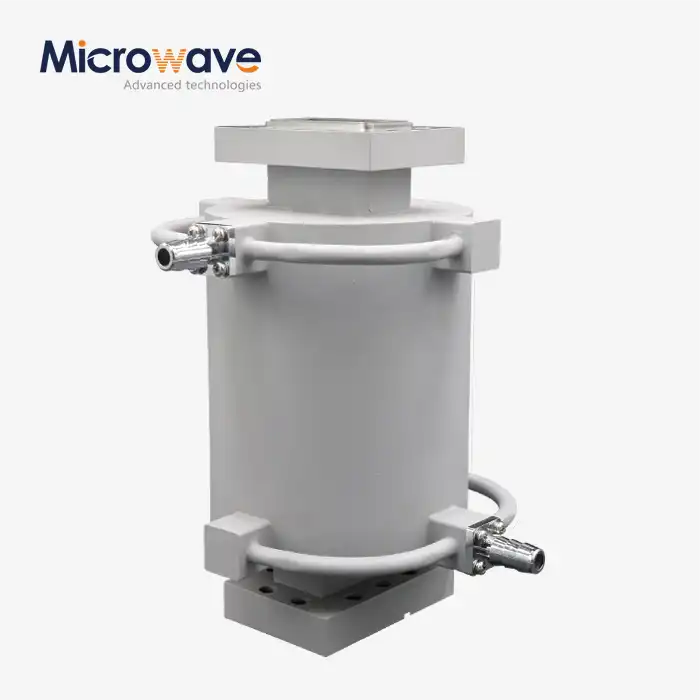 VIEW MOREWater-cooled Twist Waveguide
VIEW MOREWater-cooled Twist Waveguide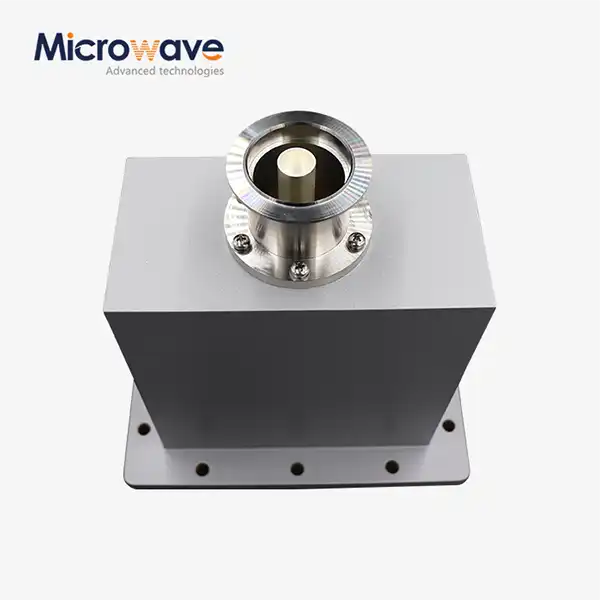 VIEW MOREEnd Launch Waveguide to Coaxial Adapter
VIEW MOREEnd Launch Waveguide to Coaxial Adapter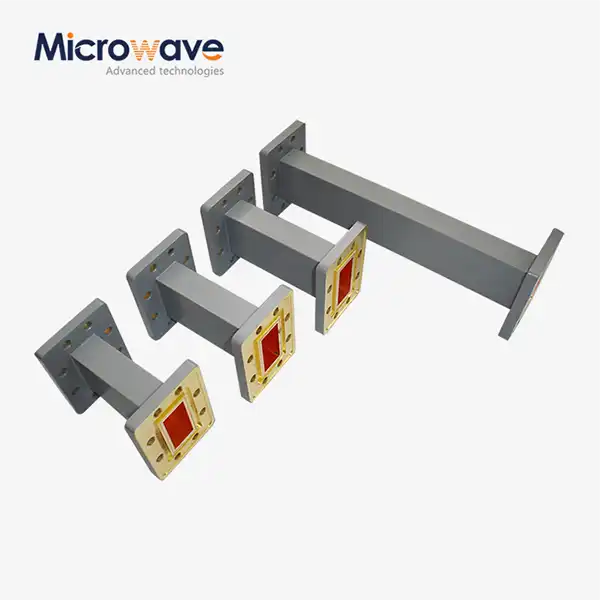 VIEW MORERectangular Straight Waveguide
VIEW MORERectangular Straight Waveguide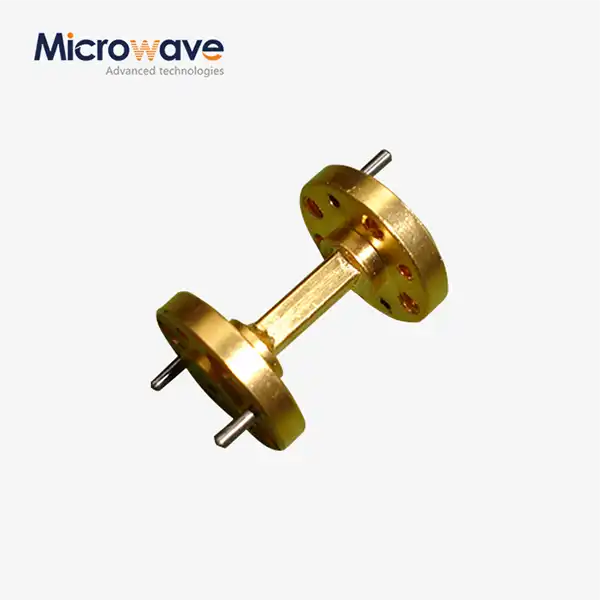 VIEW MORECircular Straight Waveguide
VIEW MORECircular Straight Waveguide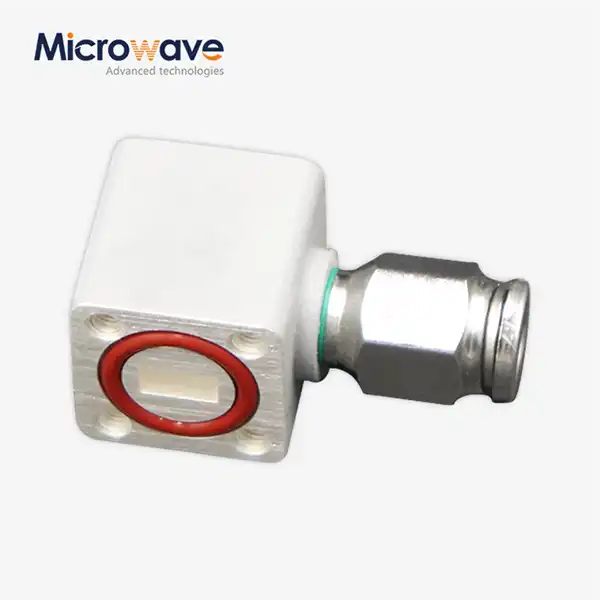 VIEW MOREInflatable Straight Waveguide
VIEW MOREInflatable Straight Waveguide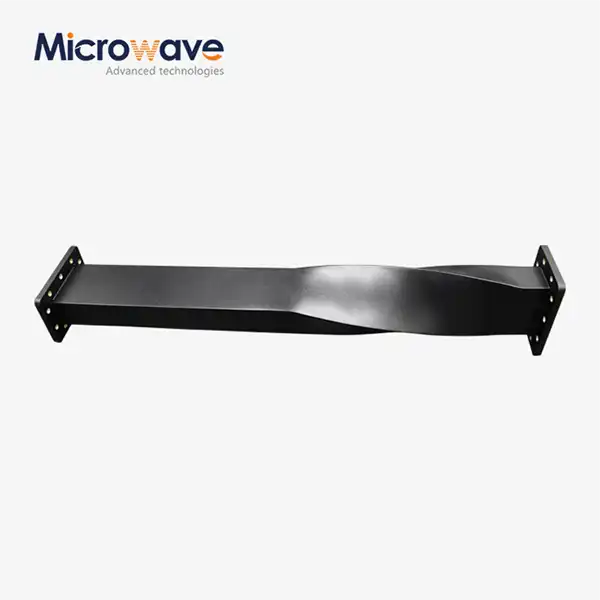 VIEW MOREWG Twist
VIEW MOREWG Twist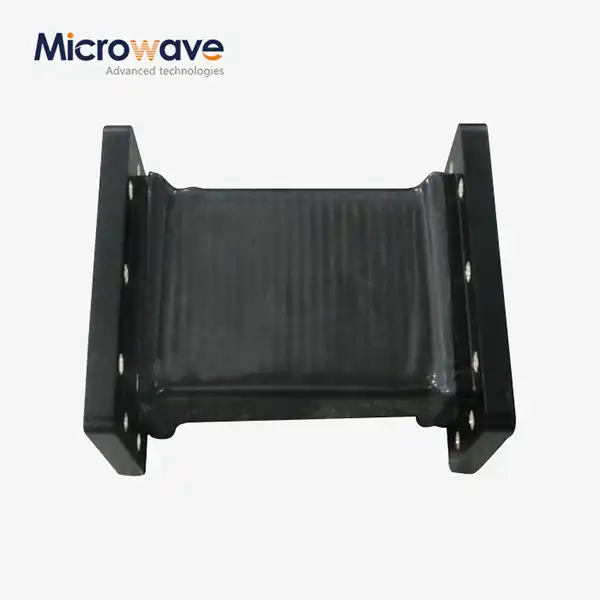 VIEW MOREFlexible Seamless Waveguide
VIEW MOREFlexible Seamless Waveguide VIEW MORERight Angle Waveguide To Coaxial Adapter
VIEW MORERight Angle Waveguide To Coaxial Adapter




